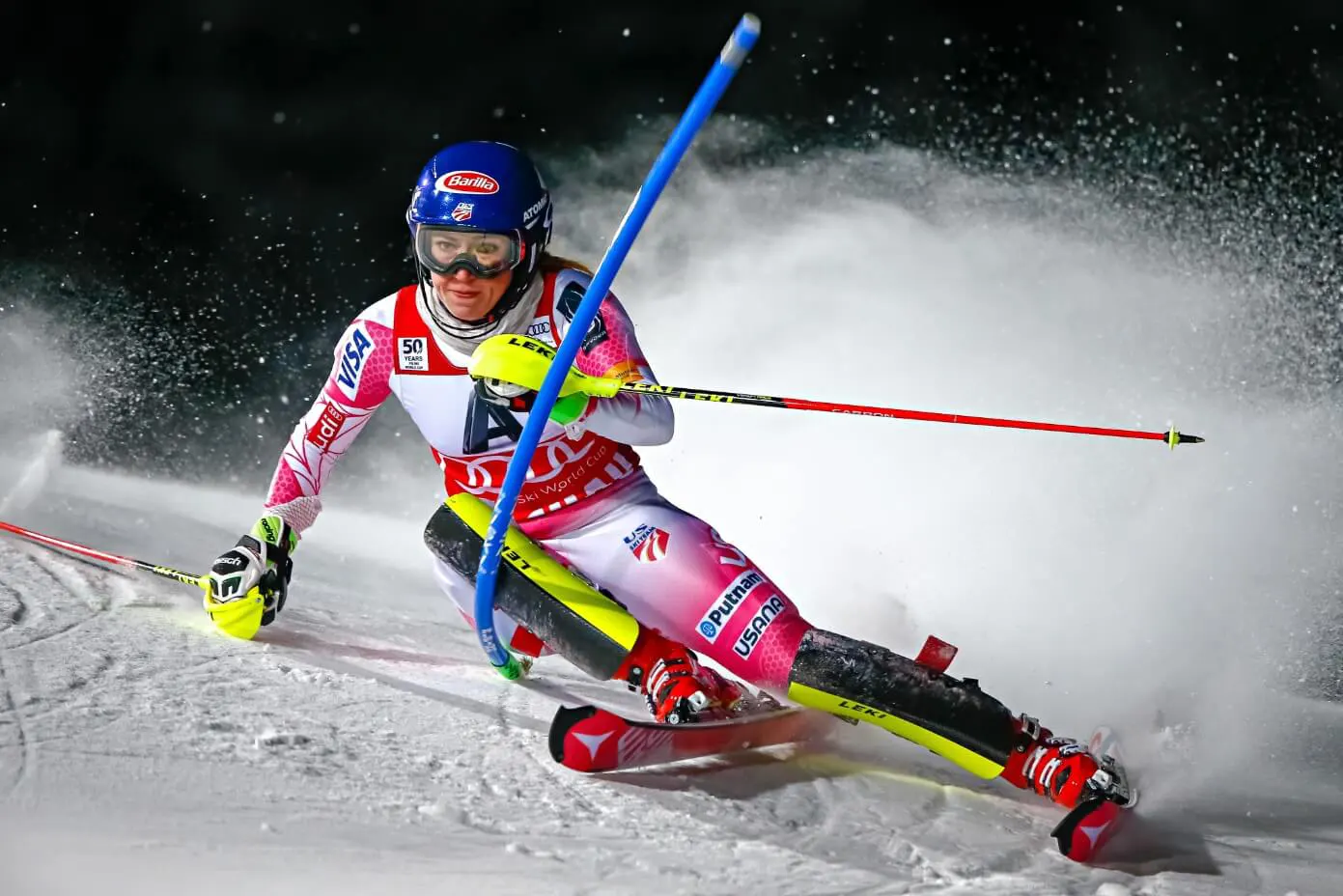On high-level ski technique, we focus (or pay attention) more on the inside leg work, than the outside one. While skiing down the slope, we should concentrate on flexing and tipping the inside leg. The outside leg is the dominant regarding balance/weight, but not in terms of movement. In skiing, the inside leg does much more active work than the outside one.
That’s how we, indirectly (and almost automatically), get angles and the pressure on the outside ski. So in Alpine Skiing, the inside leg is much more active than the outside.
As the Maestri di Sci Italiani say:
“Lo sci interno fa la parte intelligente della curva“
(The inside ski does the intelligent work, in a turn)
Speaking in terms of balance, and particularly lateral balance, it is well known that the most efficient way to turn is balancing mainly on the outside ski. And to go from “outside foot to outside foot” during the turns, we have to work mainly with each inside leg.
The work of the outside leg is passive, primitive, simple, “silly”. The sophisticated, intelligent and active work is done by the inside leg. The inside leg is the one that works actively in skiing.
I personally think that high-level skiing is all about inside leg active performance. The focus is on the inside half of the body that creates the major movements. This way gives you perfect balance on the outside ski, which is still the dominant balancing foot.
During a turn, the inside leg does two main things:
1) Flexing/shortening: this occurs mostly at the knee joint
2) Tipping to the inside: this movement comes from the tipping of the inside foot and ankle, and accessing the hip abductors to move that inside knee farther in.
The goal: to unweight the inside ski and create edge angles in the turn.
As well as flexing, the inside leg must tip to the inside of the turn to get the edge angles. The tipping always start from the inside foot and ankle, by rolling them in (actually, the foot and ankle can only move just some milimeters inside the ski boots, so it is more of an activation of that muscles than a huge movement).
The inside ski tipping leads the tipping of the outside ski (and not the other way around). So the tipping of the inside ski drives/enhances the tipping of the outside ski.
If you try to tip the skis with the outside ski first, you get the A-Frame problem (not parallel shins, different edge angles between the skis) because the inside leg does not follow the outside one.
This tipping of the inside leg comes from tipping of the inside foot. We must tip from the foot, and not form the knee. ski technique
The feet & ankle movements are the key to correctly edge the skis. It all starts down there.
As the Italian Maestro di Sci Valerio Malfato says:
“Si scia SULL’esterno, ma si scia CON l’interno”
(You ski ON the outside ski, but you ski WITH the inside ski)
Today almost everybody agrees that balance should be mainly on the outside ski, thus the inside ski must be light. We can exaggerate and even lift it off the snow, that’s especially good for training. There are a lot of drills that focus on that skill. The next one is my personal favorite drill ever too…
In the next picture of Mikaela Shiffrin ski technique, it’s easy to note that the balance is mostly over the outside ski. Look at the bending. On the opposite, the inside ski is unweighted and lightly touching the snow (it’s almost in the air, actually!). That’s what in the ski coaching world is known as “long leg-short leg“… To achieve that, we need to deeply flex the inside leg.

Mikaela Shiffrin – Flachau SL Austria 2017
Keep ripping some arcs!
If you find this piece of information useful to improve your skiing, please support this website and help us to keep it up and create more content! A small donation really means a lot to us... Thank you so much!


Fede, so the flexing degree of inside knee determines balance, how low we go, and the edge angle (with hip drop),, instead of the degree of angulation?
Yes, Tito. The more we flex the inside knee, the more we “fall” down and inside of the turn, and the more edge angle of the skis we get. Upper body angulation is done in order to help maintain balance on the outside ski as we are tipping the legs in, as the turn progresses. Hope that clarifies a bit the topic. Cheers!
Awesome intelligent info
Contact me